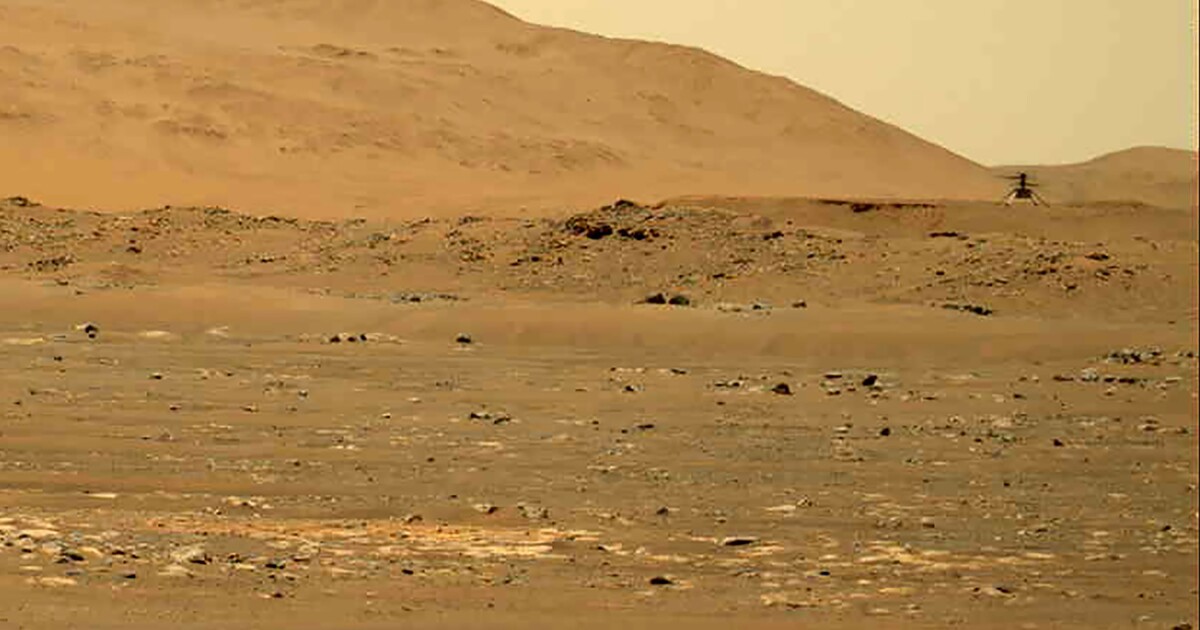

NASA launched its Spirit rover to Mars 20 years ago as part of a pair of rovers sent to the red planet, which helped provide important information about the planet, including past evidence of water on Mars.
The other rover in the Mars Exploration Rover mission, Opportunity, sent its last message to NASA five years ago, and since then, the space agency has continued its exploration of the red planet. Here is a look at NASA’s current and future exploration of Mars.
REPUBLICAN PRIMARY: BIG TENT OR BIG TOP?
What is NASA doing on Mars?
NASA has seven active missions focused on the exploration of Mars, including two rovers and five orbiters.
The two rovers exploring the Martian surface include the Curiosity and Perseverance rovers.
The Curiosity rover was launched in November 2011 and landed on Mars in August 2012, as the space agency’s largest rover ever sent to the red planet. The goal of the mission was to see if Mars ever had the conditions to support small life forms.
NASA said the rover did, indeed, find “chemical and mineral evidence of past habitable environments on Mars” early in its mission and now is exploring “the rock record from a time when Mars could have been home to microbial life.”
The Perseverance rover was launched in July 2020 and landed on Mars in February 2021. The goal of this mission is to answer “high-priority science goals,” including the potential for life on the planet.
“The mission also provides opportunities to gather knowledge and demonstrate technologies that address the challenges of future human expeditions to Mars. These include testing a method for producing oxygen from the Martian atmosphere,” NASA said on the mission’s website.
What are NASA’s plans for exploration of Mars?
NASA has two planned missions for Mars, including a mission to return a sample of the red planet to Earth.
The Mars Sample Return campaign is a long-term mission with the goal of bringing back rocks and soil from Mars to investigate the planet further.
“Once the samples are on our home planet, scientists plan to conduct detailed chemical and physical analysis in laboratories around the world to look for signs of past life on Mars and perform many other studies beyond the capabilities of instruments delivered to Mars,” NASA said on its mission website.
Currently, the space agency has the launch dates for the Earth Return Orbiter as 2027 and the Sample Retrieval Lander as 2028, with those spacecraft expected to arrive at Mars in 2029 and 2030, respectively. The mission timeline calls for the samples to be returned to Earth in 2033.
How does the Artemis program fit into Mars exploration?
The Artemis program is scheduled to land men and women on the moon in the coming years, but the program has an eye for a future manned mission to the red planet.
When NASA announced Blue Origin had been selected to develop the lunar landing system for the space agency’s Artemis V mission, NASA Administrator Bill Nelson mentioned the future hope of a landing on Mars.
“We are in a golden age of human spaceflight, which is made possible by NASA’s commercial and international partnerships. Together, we are making an investment in the infrastructure that will pave the way to land the first astronauts on Mars,” Nelson said.
CLICK HERE TO READ MORE FROM THE WASHINGTON EXAMINER
NASA said the manned missions to the surface of the moon, Artemis III, IV, and V, are planned for 2025, 2028, and 2029, respectively.
Artemis I was the first mission in the program and saw the Orion spacecraft successfully orbit the moon and conduct tests. The unmanned mission launched on Nov. 16, 2022, after several months of delays, and successfully splashed down in the Pacific Ocean on Dec. 11, 2022.





